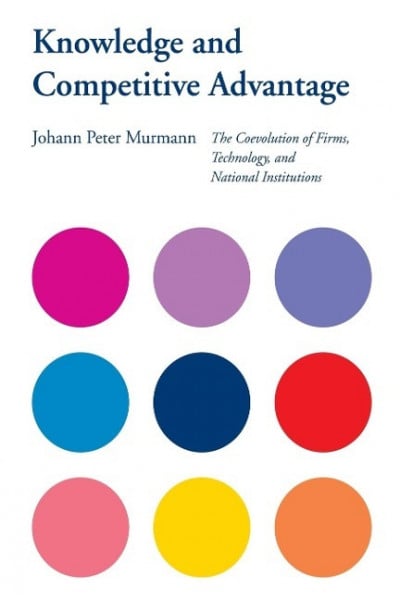
Knowledge and Competitive Advantage
Kurzinformation
inkl. MwSt. Versandinformationen
Lieferzeit 1-3 Werktage
Lieferzeit 1-3 Werktage

Beschreibung
Entrepreneurs, managers, and policy makers must make decisions about a future that is inherently uncertain. Since the only rational guide for the future is the past, analysis of previous episodes in industrial development can shape informed decisions about what the future will hold. Historical scholarship that seeks to uncover systematically the causal processes transforming industries is thus of vital importance to the executives and managers shaping business policy today. With this in mind, Johann Peter Murmann compares the development of the synthetic dye industry in Great Britain, Germany, and the United States through the lenses of evolutionary theory. The rise of this industry constitutes an important chapter in business, economic, and technological history because synthetic dyes, invented in 1856, were the first scientific discovery quickly to give rise to a new industry. Just as with contemporary high tech industries, the synthetic dye business faced considerable uncertainty that led to many surprises for the agents involved. After the discovery of synthetic dyes, British firms led the industry for the first eight years, but German firms came to dominate the industry for decades; American firms, in contrast, played only a minor role in this important development. Murmann identifies differences in educational institutions and patent laws as the key reasons for German leadership in the industry. Successful firms developed strong ties to the centers of organic chemistry knowledge. As Murmann demonstrates, a complex coevolutionary process linking firms, technology, and national institutions resulted in very different degrees of industrial success among the dye firms in the threecountries. von Murmann, Johann Peter;
Produktdetails

So garantieren wir Dir zu jeder Zeit Premiumqualität.
Über den Autor

- Hardcover
- 298 Seiten
- Erschienen 1997
- Campus Verlag

- Hardcover
- 780 Seiten
- Erschienen 2002
- Springer

- Kartoniert
- 384 Seiten
- Erschienen 2001
- Crown Currency

- Gebunden
- 400 Seiten
- Erschienen 2017
- Springer

- paperback
- 444 Seiten
- Erschienen 1994
- Free Press

- Kartoniert
- 500 Seiten
- Erschienen 2022
- Springer

- Gebunden
- 288 Seiten
- Erschienen 2006
- Harvard Business Review Press

- Hardcover
- 184 Seiten
- Erschienen 2012
- Gabler Verlag

- Gebunden
- 512 Seiten
- Erschienen 2008
- Pfeiffer




 bestellen
bestellen





























